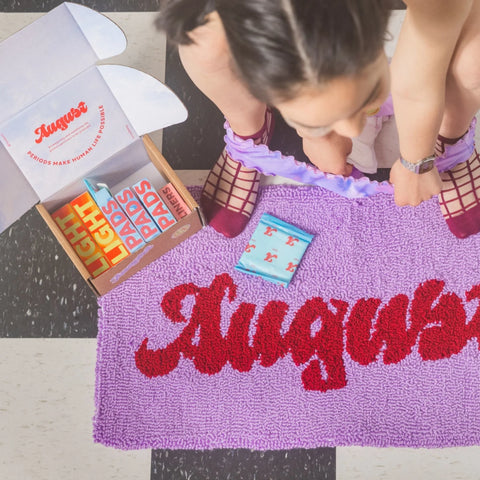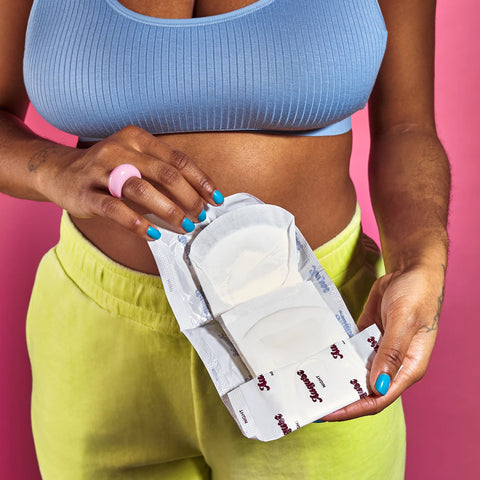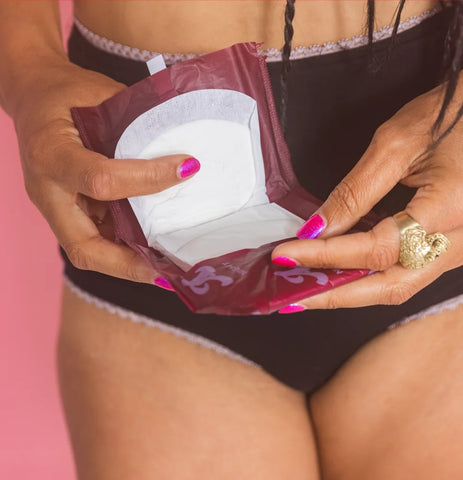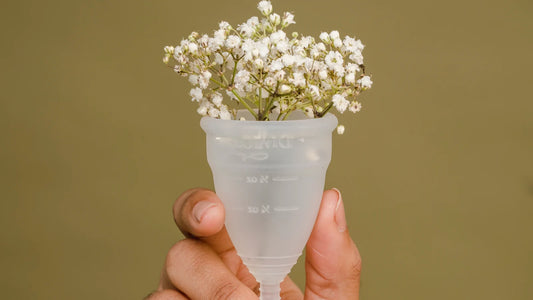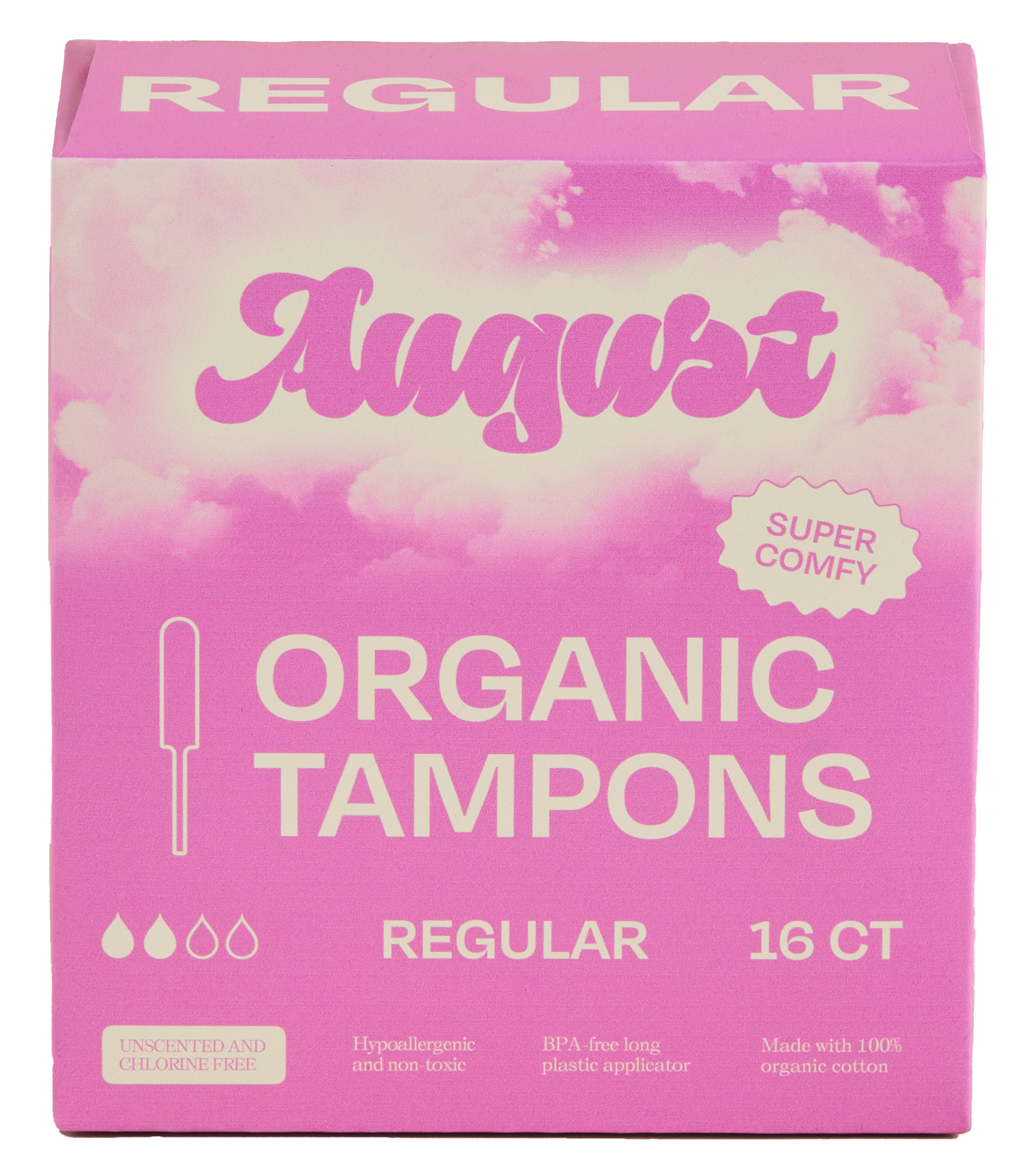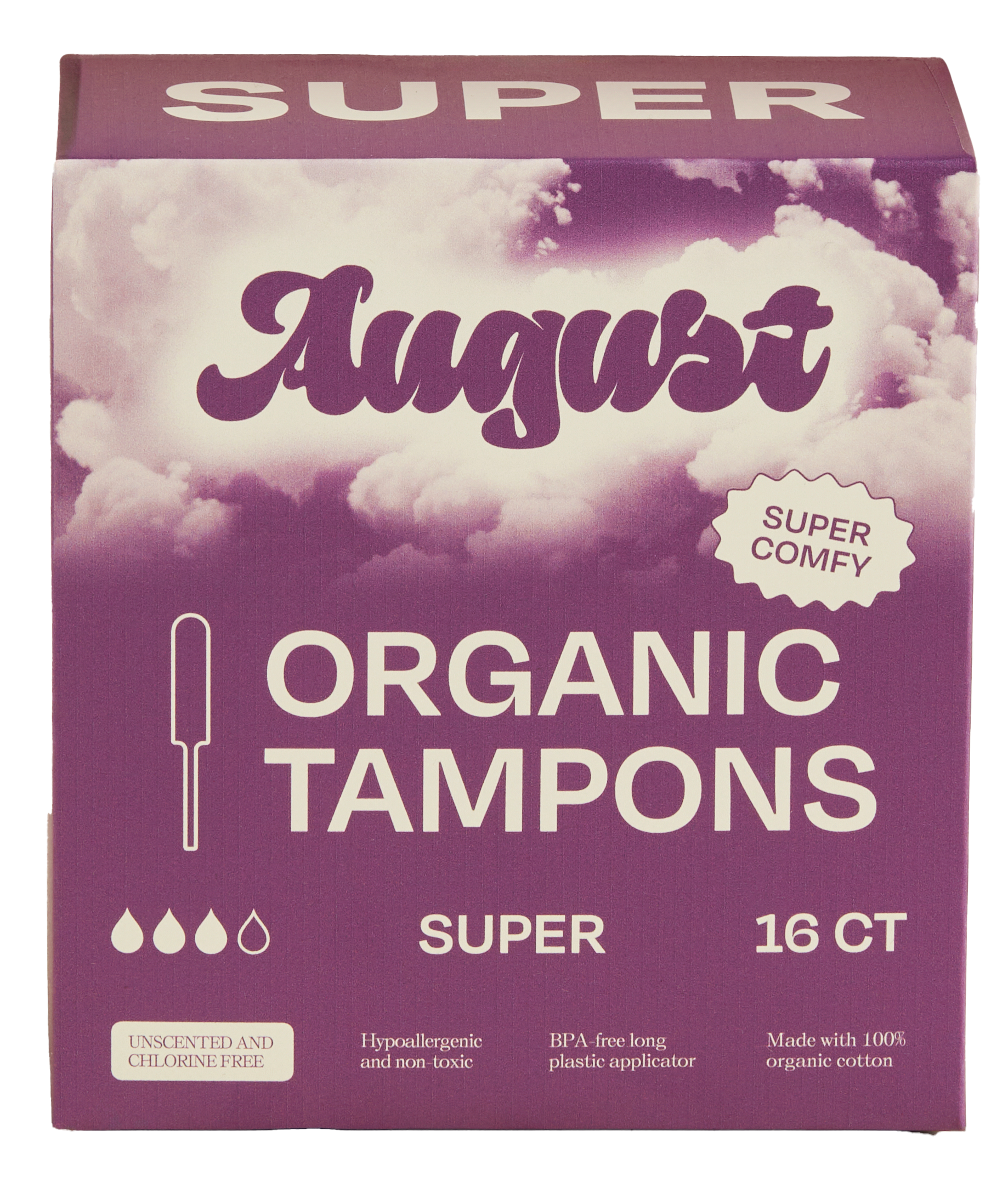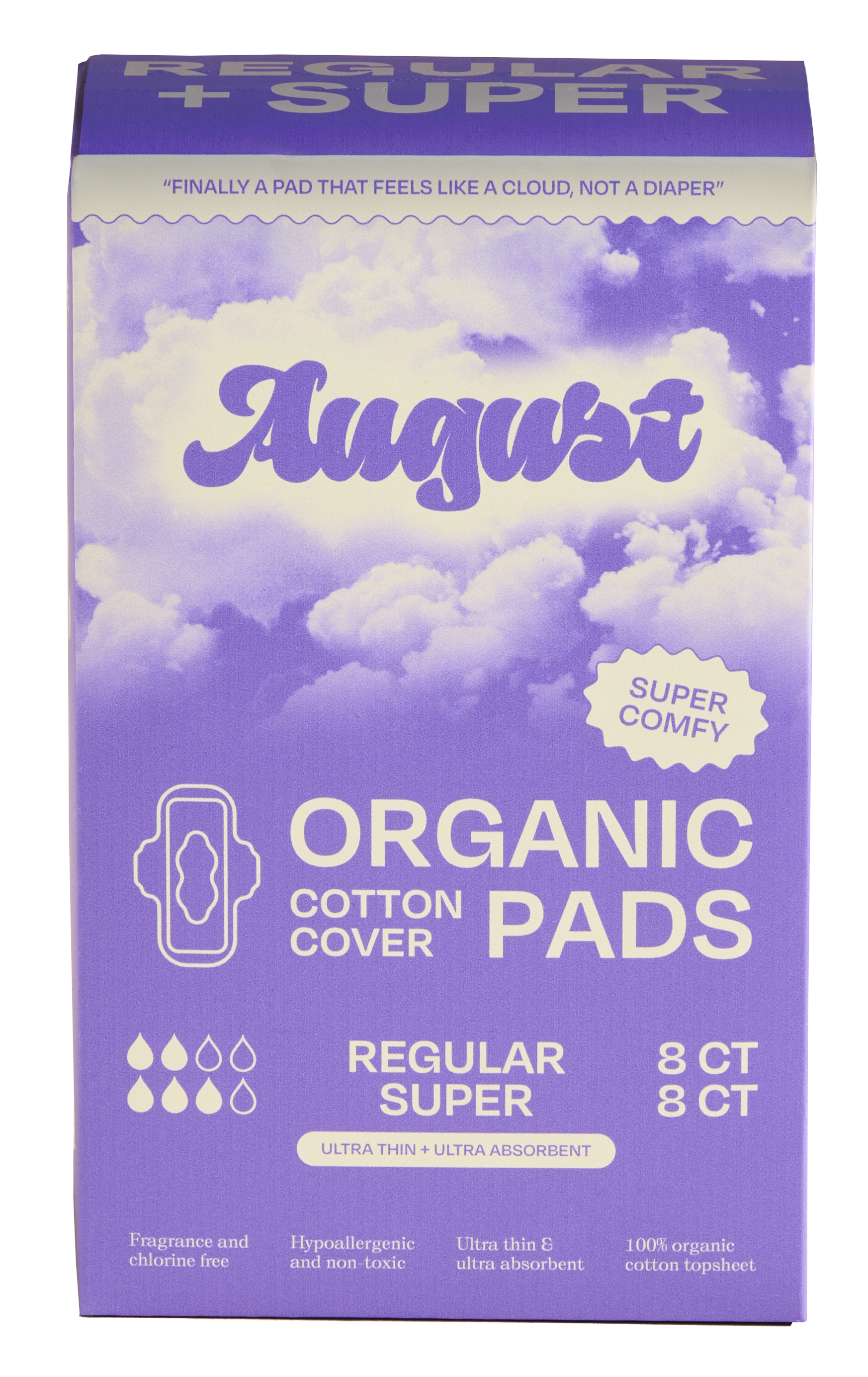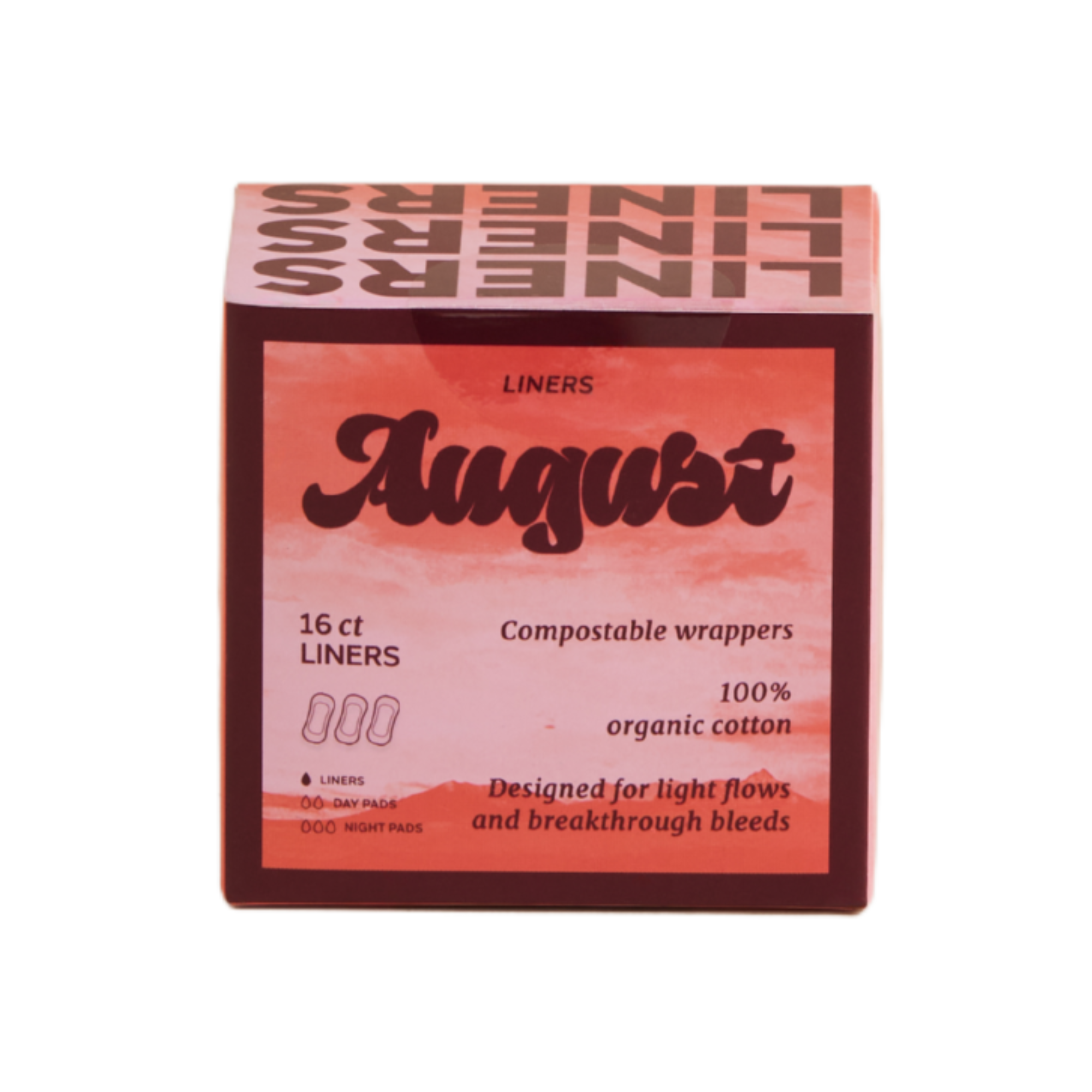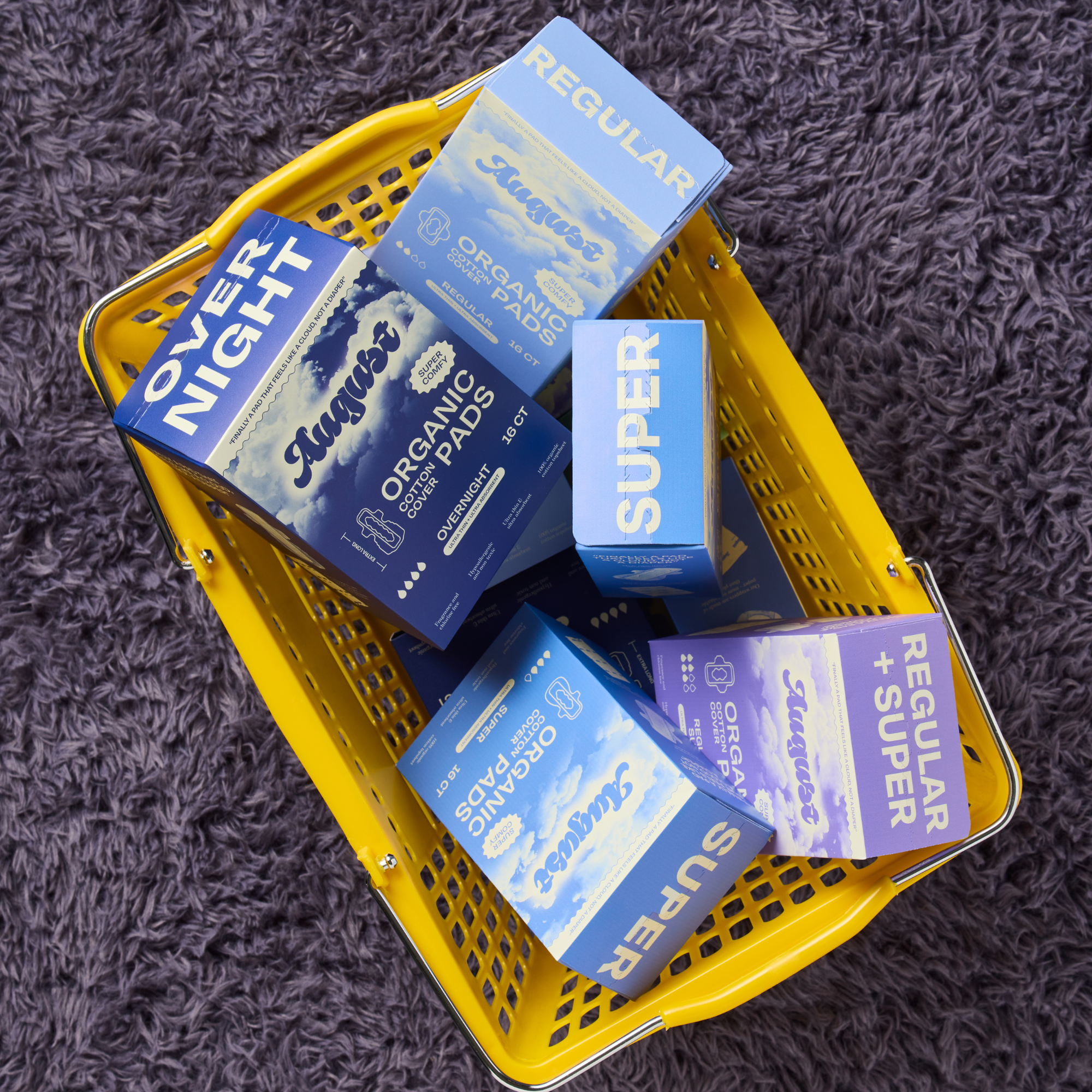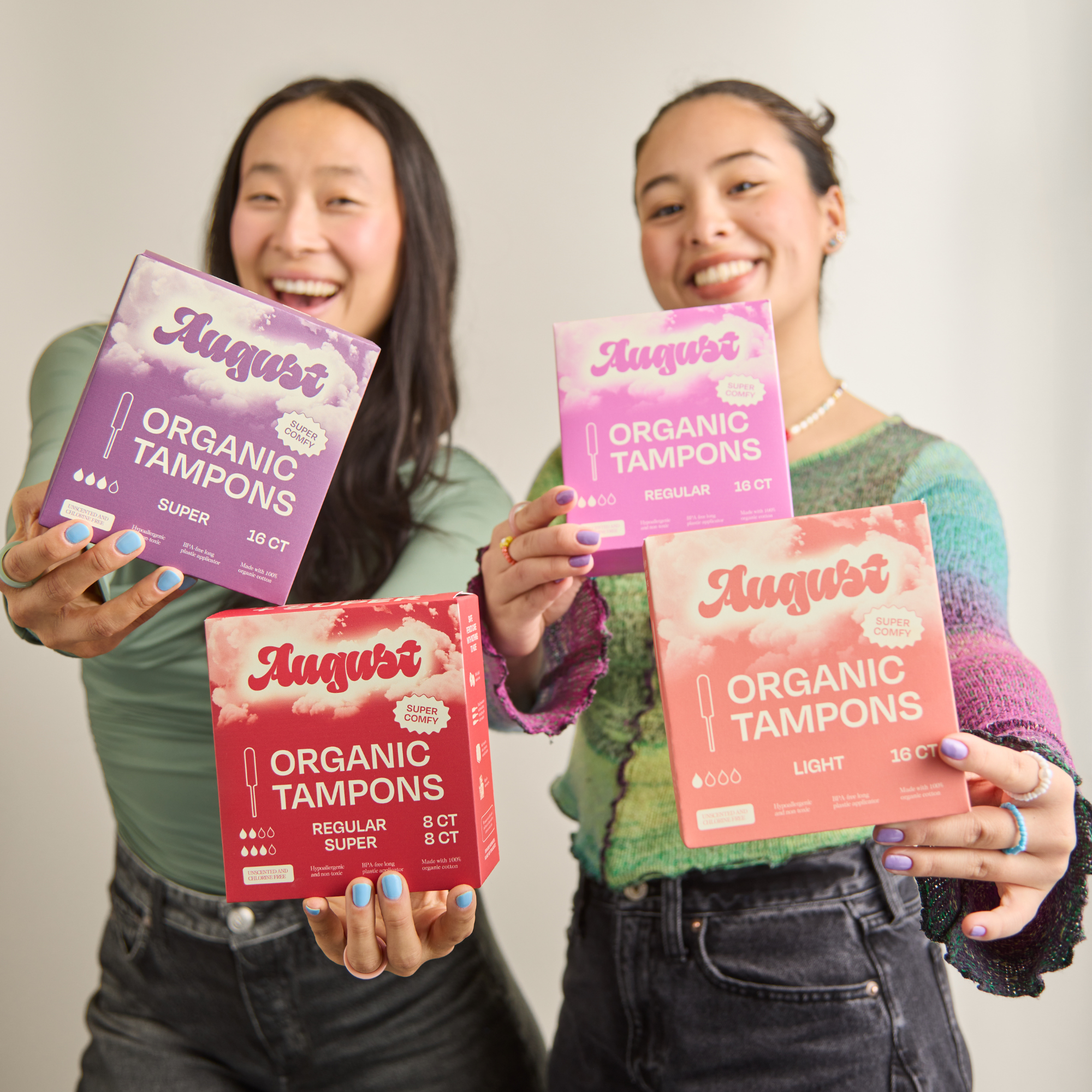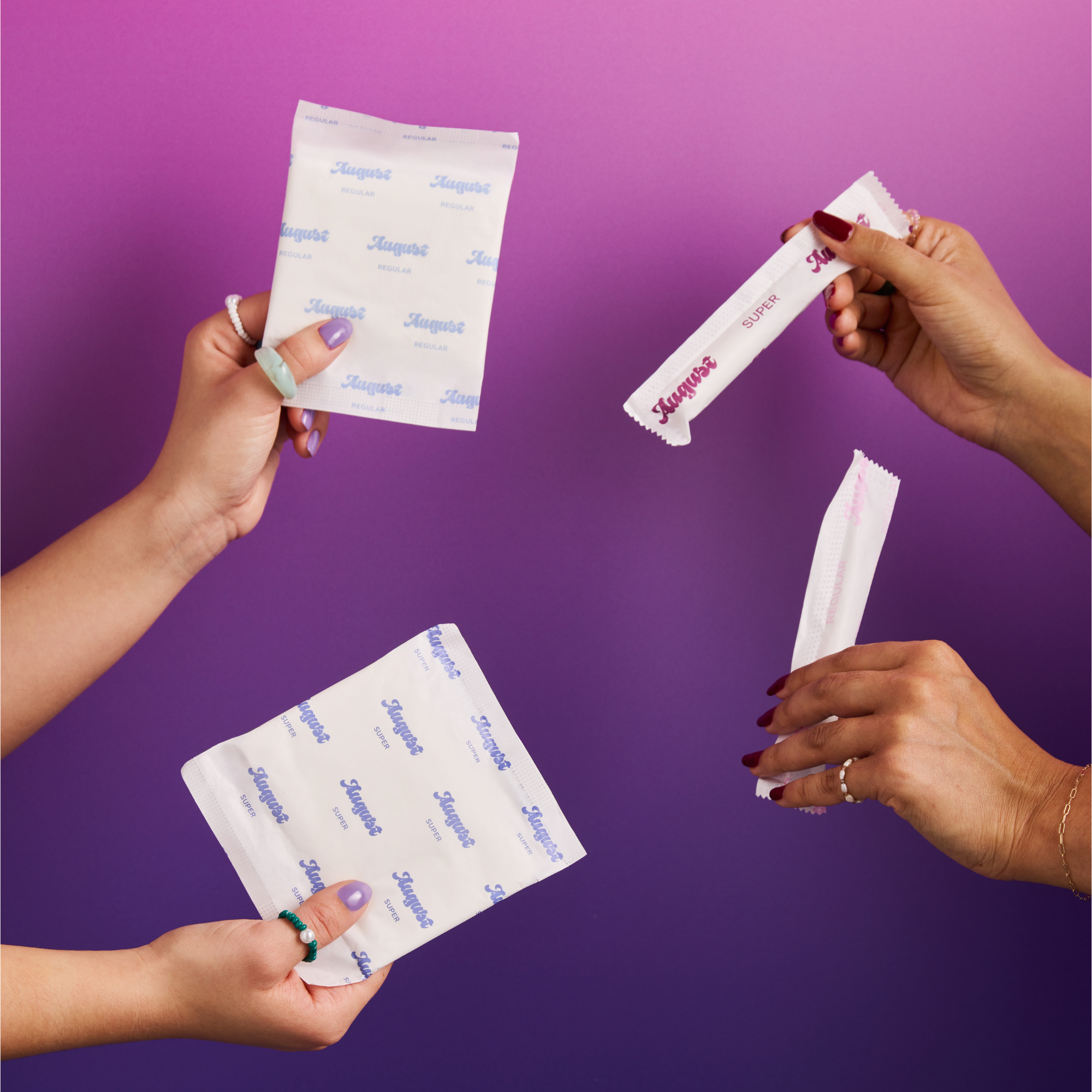We were getting tons of questions about using a liner from our community... so with the help of our medical board members Dr. Staci and Dr. Lincoln, we put together this comprehensive liners 101 article!
What are liners for?

Liners are used for day-to-day coverage of vaginal discharge, irregular period flow, any light spotting, or for menstruators with a very light flow!
What’s the difference between a liner and a pad?

The main difference between products is the absorbency and size.
August liners (155mm in length) can hold up to 5 mL of liquid.
In comparison, August day pads (245mm) can hold up to 60mL while night pads (285mm) hold up to 80mL.
August liners and pads are both made from the same materials, including 100% organic cotton and Japanese SAP that have an unmatched ability to absorb liquids, turn them into gels, and then hold them even under pressure.
How do panty liners and pads differ from tampons?

Liners and pads are completely different from tampons in terms of how the product is actually used and its absorbency!
- Tampons are internal; they are inserted in the vaginal canal.
- Pads & liners are external; they simply rest on the menstruator’s underwear to absorb blood that flows out.
August liners absorb up to 10mL of liquid so they’re around the same absorbency as tampons, but less absorbent than August day pads (60mL) and night pads (80mL). Also, all of August’s period products are made with 100% organic cotton!
When should I use a panty liner versus a pad?

You should only really use a liner if your flow is so light that your pad remains unsoaked, even on your heaviest days. You can use a liner for day-to-day discharge needs as well like: vaginal discharge, surprise period flow, or any light spotting. Some post-partum menstruators will opt to use a pad like other people use a liner, at least temporarily.
The remainder of the questions were answered by Dr. Staci Tanouye & Dr. Jennifer Lincoln from the August Medical Board

Why can’t you wear liners every day?

Technically, you can, but it's not the best in terms of vulvar hygiene practices. There are several reasons why daily panty liner use should be avoided if possible: they are not breathable, they can aggravate discharge, trap moisture, and irritate delicate vulvar skin. This can all lead to itching, irritation, or rashes. If you do choose to wear liners, it's best to change them frequently to keep dry.
Do liners increase discharge?

They have potential to increase discharge. Vaginal discharge is a natural cleaning mechanism (think of it like gentle self-exfoliation of skin cells and mucous), and if moisture is trapped against the vulva with something that is not breathable, then your body may think it needs to increase its ability to self-clean with an increase in discharge. By getting rid of daily liner use and switching to cotton underwear – but changing your underwear more frequently to keep dry and breathable – over time, many people will notice a decrease in that normal daily discharge. Basically, don't suffocate your vulva. It wants to breathe!
What does normal discharge look like? What about abnormal?

Normal discharge can change throughout your menstrual cycle based on normal hormonal changes. But in general, normal discharge can be clear, white or slightly yellow-tinged. It can be thin to pasty to sticky like egg whites. The normal daily amount is anywhere from 1 to 5ml.
Abnormal discharge is anything that is grey, bright yellow or green, or brown/red that could indicate bleeding outside the time surrounding your period. A reason to get checked is if your discharge starts causing itching or burning. Normal discharge also has a slight natural smell to it if you hold it close to your nose, but if you smell anything foul or fishy that seems to be stronger than usual, that should be checked out as well.
Can you get TSS from using liners?

In general, this type of period product is not something that we associate with TSS (Toxic Shock Syndrome), and should not increase risk of TSS. However, there are case reports of TSS associated with menstrual pad use during periods; although, these events are extraordinarily rare.
If I want to wear liners every day, what can I do to decrease chances of vaginal yeast infections?

The best thing to do is to change it often, such as everytime you go to the bathroom or anytime you feel it starting to get wet or saturated. Also, it's best to skip any liners that have fragrance - these can disrupt the good bacteria and possibly make a vaginal yeast infection more likely.





